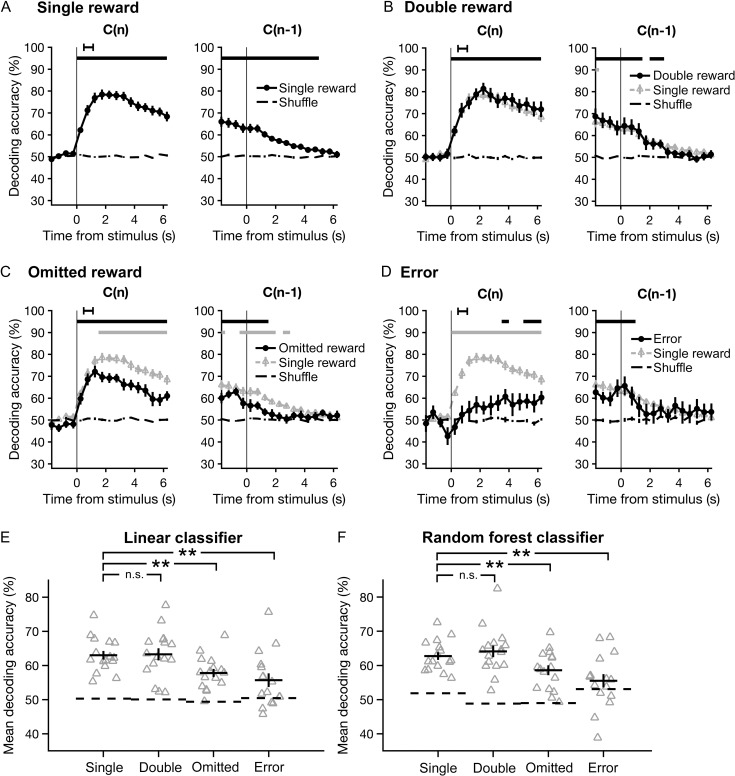Figure 6.
The accuracy of decoding chosen actions from the neural ensemble activity is diminished during omitted-reward and error trials. Choices were decoded using classifiers based on linear discriminant analysis, and accuracy was estimated with Monte Carlo cross-validation (repeated random subsampling). (A) The accuracy of decoding choices made on single-reward trials (left), or trials in which the previous outcome was single reward (right), plotted as a function of time. Data are presented as mean ± SEM. Chance-level accuracy (black dashed line) was determined by testing classifiers constructed using shuffled choices. Black horizontal bars, bins significantly different from chance (P < 0.05, Wilcoxon signed-rank test). Black error bar, 95% confidence interval for time of outcome. (B-D) Same as A for double-reward, omitted-reward, and error trials. Results from single-reward trials are overlaid for visual comparison (gray triangles). Lower gray bars, bins with a significant difference in decoding accuracy relative to single-reward trials. (E) Mean decoding accuracy across all time-points shown in A–D for each trial outcome. Gray triangles, individual sessions. Black crosshairs, mean ± SEM. Wilcoxon signed-rank test: **P < 0.01; n.s., not significant. (F) Same as E using random forest classifiers.

